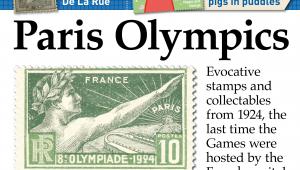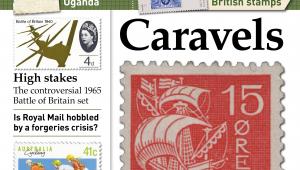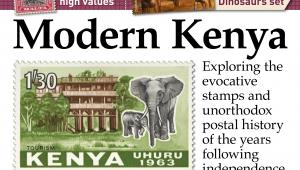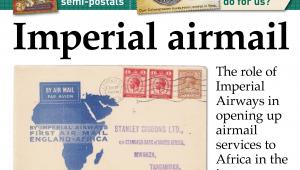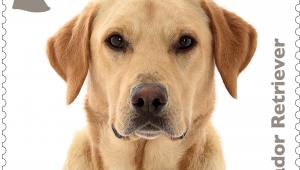Visions of the Universe
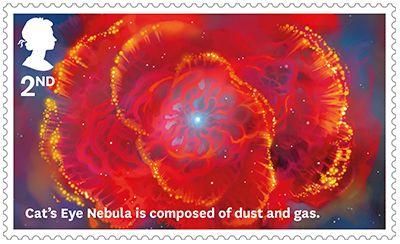
A set of eight stamps issued by Royal Mail on February 11, entitled Visions of the Universe, celebrates the 200th anniversary of the Royal Astronomical Society.
It illustrates astronomical features and phenomena discovered and investigated by British astronomers and astrophysicists over the years, using dramatic and intensely colourful original artwork rather than photographs.
Founded in 1820 as the Astronomical Society of London, and based at Burlington House on Piccadilly, the RAS encourages and promotes the study of the universe and closely related branches of science. It received its royal charter in 1831.
Past Presidents have included William Herschel, Francis Baily and John Herschel (who were depicted on a 1970 stamp marking the 150th anniversary), Warren De La Rue (son of the stamp pirnter Thomas De La Rue), and the Earl of Crawford (creator of one of the world’s greatest philatelic libraries).
Today the Society has more than 4,000 members, most of them professional researchers.
Designed by True North, from illustrations by Robert Ball, the stamps were printed in litho by International Security Printers and are available in four horizontally se-tenant pairs.
2nd class CAT’S EYE NEBULA
The Cat’s Eye Nebula is an expanding cloud of gas created by the death of a star. British astronomer William Huggins demonstrated this in 1864, using what was then the pioneering technique of optical spectroscopy.
2nd class ENCELADUS
Enceladus is a moon of Saturn whose eye-catching feature is geysers which spray water vapour into space. Discovered by the British-built magnetometer on NASA’s Cassini probe, they are fed by an ocean under the surface, which is believed to contain the molecular building blocks necessary for life.
1st class PULSARS
A pulsar is a dense and rapidly rotating neutron star which emits beams of electromagnetic radiation from its poles. The first pulsar was discovered by the British astronomers Jocelyn Bell and Anthony Hewish in 1967, as a celestial radio pulse picked up at regular 1.3-second intervals.
1st class BLACK HOLES
A black hole is an area of space whose gravitational pull is so large that nothing can escape it, not even light. The possibility of its existence was first suggested by a British philosopher, John Michell. More recently, the British theoretical physicist Stephen Hawking predicted that subatomic particles might escape black holes in certain circumstances, leading them to ‘evaporate’.
£1.55 JUPITER’S AURORAS
The auroras in the atmosphere of the giant planet Jupiter shine in ultra-violet light and X-rays. This makes them significantly more powerful than Earth’s red and green auroras, but their power source remains a mystery, currently being investigated by a team of astronomers at the University of Leicester.
£1.55 GRAVITATIONAL LENSING
Gravitational lensing is the formation of multiple images of a distant celestial object by the gravity of a massive closer one bending its light. The phenomenon was predicted by Albert Einstein, and confirmed in 1979 when an Anglo-American team of astronomers discovered what appeared to be identical galaxies side-by-side.
£1.60 COMET 67P
Comet 67P, also known as Churyumov-Gerasimenko, is an icy body, just 4.3km long, that was explored in 2014 by the Rosetta probe launched by the European Space Agency, in which Britain plays a role. It was found to be rich in carbon-rich molecules, of the kind which could have been key to starting life on Earth.
£1.60 CYGNUS A GALAXY
Cygnus A is a galaxy with a pair of radio lobes, emitting radio signals not from its centre but from two extremities, a phenomenon discovered by the Jodrell Bank observatory in Britain. Powered by energetic particles accelerated from the centre by strong magnetic fields, this is one of the strongest radio sources known to astronomers.
OTHER PRODUCTS
The presentation pack explores Britain’s rich tradition of astronomical investigation, and gives a brief history of the Royal Astronomical Society.
Besides stamp cards and standard first day covers, a choice of coin covers celebrate Professor Stephen Hawking.
PRICES
Set of 8 stamps £8.92
Presentation pack £9.75
Stamp cards £3.60
First day cover £11.30
Coin covers from £17.50
VERDICT
COMMEMORATIVE WORTH 3/5
The Royal Astronomical Society has a worldwide reputation, but is not mentioned on the stamps themselves and appears to be an excuse for a thematic issue
QUALITY OF DESIGN 3/5
Resisting the temptation to rely on photographic images has given the stamps extra dynamism
WOW FACTOR 4/5
Real phenomena have considerably greater lustre than fictional characters from space movies

















